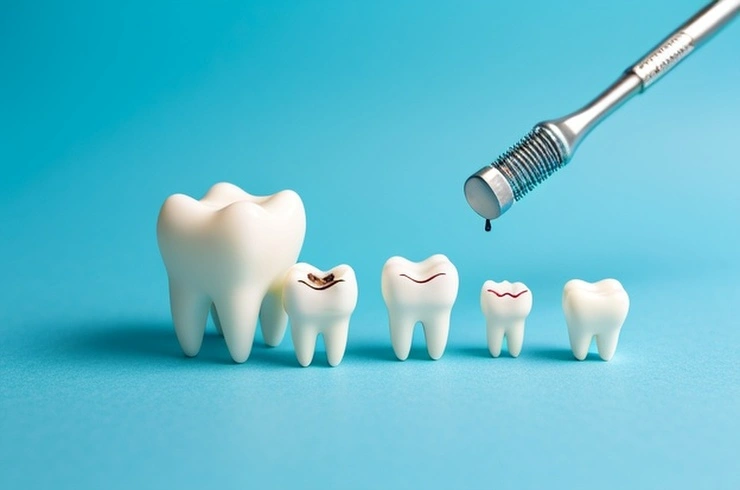
Cavities are a common dental problem, but did you know they can attack any part of your tooth, including the smooth sides and even exposed roots? Understanding where cavities form, how they progress, and what you can do to prevent them is key to maintaining optimal oral health.
Where Cavities Develop on Your Teeth
Dental professionals classify cavities based on their location and the extent of decay. According to The Journal of the American Dental Association, cavities can develop in several areas:
Pits and fissures: These are the chewing surfaces of your back teeth.
Approximal surfaces: These are the areas where teeth touch each other.
Cervical surfaces: These are the parts of the teeth closest to the gum line.
Smooth surfaces: These can be on the circumference of the tooth or between teeth.
Roots: These are the parts of the tooth below the gum line, often exposed due to gum recession.
When a tooth surface is completely healthy, it's referred to as a sound surface. The journey from a sound surface to a full-blown cavity involves distinct stages of decay:
Initial Caries Lesion: This is the earliest stage of decay, often appearing as a white spot on the enamel. At this point, the tooth surface is still intact, and no cavity has formed.
Moderate Caries Lesion: In this stage, tiny holes might appear, the beige dentin beneath the enamel may become visible, or a shallow cavity might start to form.
Advanced Caries Lesion: This is the most severe stage, where the dentin layer is exposed, and a full cavity has developed.
Treating Smooth Surface Cavities
The good news is that early decay on a smooth tooth surface can often be reversed. Research in the Journal of Oral Hygiene & Health suggests that fluoride can help remineralize these early areas of decay. Another effective early treatment involves applying specialized resin to block tiny holes in the enamel, which stops bacterial growth and halts decay progression.
If the decay has advanced and a cavity has already formed, your dentist can still provide various treatments to prevent further worsening. According to the Mayo Clinic, common treatments include:
Fillings: These are used to treat moderate cavities and prevent them from expanding.
Crowns: If a large cavity has significantly weakened a tooth, a crown can restore its strength and structure.
Root canals: If the decay has reached the sensitive inner pulp of the tooth, a root canal may be necessary to remove the infected nerve.
Tooth extraction: In severe cases where a smooth surface cavity has damaged the tooth beyond repair, extraction might be the only remaining option.
Preventing Smooth Surface Cavities
Poor oral hygiene is the primary cause of tooth decay, including smooth surface cavities. To effectively prevent them, follow these essential practices:
Brush twice daily with fluoride toothpaste: This is fundamental for removing plaque and food particles that contribute to decay.
Regular dental check-ups: Visit your dentist every six months, or as recommended. These appointments allow your dentist to detect and treat early decay before it escalates into a full cavity.
Fluoride mouthwash: If your dentist identifies you as being at higher risk of decay, they might suggest daily rinsing with a fluoride mouthwash.
In-office fluoride treatments: Your dentist may also offer professional fluoride treatments to further strengthen your tooth enamel.
Optimal water intake: Consider drinking fluoridated tap water if it's available in your area.
Smart snacking: Limit frequent snacking and sipping on beverages other than water throughout the day.
Tooth-friendly diet: Incorporate fruits and vegetables into your diet, as they contribute to overall oral health.
Smooth surface cavities are treatable, but more importantly, they are entirely preventable. By maintaining diligent oral hygiene practices and scheduling regular dental visits, you can catch and reverse the early signs of decay, safeguarding your smile for years to come.
This article is intended to promote understanding of and knowledge about general oral health topics. It is not intended to be a substitute for professional advice, diagnosis or treatment. Always seek the advice of your dentist or other qualified healthcare provider with any questions you may have regarding a medical condition or treatment.
Pro Tip
The content of the article is shared by netizens, please carefully identify it